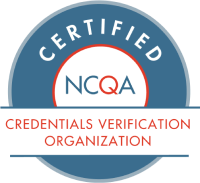There have been several new pieces of legislation passed in New York State that are changing the healthcare regulations. New York’s new regulations—Medicaid Carve-In and Article 31—require behavioral health programs to credential providers differently and to a higher standard than ever before.
Before you start wondering how your already-overloaded credentialing team will carry an even larger workload, let’s frame these new regulations as an opportunity for growth in and improvement of your administrative processes. These new regulations offer behavioral health programs the opportunity to leverage technology and tech-enabled services to meet this new higher demand.
Understanding the new regulations in depth
Below we’ve outlined the major components of the changes coming to New York’s behavioral health programs via Article 31 and the Medicaid Carve-In.
How does Article 31 affect behavioral health programs?
Many behavioral health facilities that didn’t need licenses previously must now have operating certificates. This means the following programs need to credential their providers:
- Comprehensive psychiatric emergency programs (CPEPs)
- Outpatient (nonresidential) programs, including clinic, continuing day treatment, day treatment, partial hospitalization, intensive psychiatric rehabilitation treatment, and personalized recovery oriented services (PROS)
- Assertive community treatment (ACT) programs
- Psychiatric inpatient units in general hospitals
- Hospitals for mentally ill persons (freestanding psychiatric hospitals other than a state-operated psychiatric center)
- Residential treatment facilities for children and youth
- Residential (housing) facilities such as a community residence or apartment program
How does the Medicaid Carve-In affect behavioral health programs?
The new Medicaid Carve-In is motivated by three goals: 1) improving quality of care, 2) improving health outcomes, and 3) reducing costs and rightsizing the system. Medicaid aims to achieve these goals by moving fee-for-service populations and services into a managed-care model. Within the managed-care model, Medicaid is employing the following design principles:
- Ensure person-centered care management
- Integrate medical and behavioral health services
- Provide recovery-oriented services
- Provide client choices
- Ensure comprehensive networks
- Make outcome-based payments
- Track physical and behavioral health spending separately
- Reinvest savings into behavioral health services improvements
- Address populations with unique needs, including children, families, and older adults
First, all Medicaid managed-care plans must demonstrate their qualifications to manage mental health services themselves, or they must choose to partner with organizations that have experience in providing mental health services.
Second, health plans can receive additional funding if they create specialized managed-care plans called Health and Recovery Plans (HARPs) for populations that need significant mental health support and care. HARPs earmark funding for mental health services with the aim of serving those who currently lack access to care. Organizations choosing to administer HARPs are required to demonstrate their ability to do so.
To be eligible to administer a HARP, an organization’s credentialing requirements will increase to ensure the program has
- appropriately experienced staff in place to oversee the process,
- full processes in place to handle this new burden,
- a compliant credentialing and recredentialing process that it creates or accesses through partnering with another plan, and
- a large, adequate network.
andros Pro Tip: A robust practitioner data-management platform will enable an organization to gather, manage, and accurately maintain information that pertains to their active practitioner roster. The key to meeting network adequacy requirements is through continuously updated and accurate practitioner data. Specifically, the following questions need to be answered in order to maintain network adequacy requirements and further drive provider management of an organization’s network.
- Are your providers meeting the needs of your patients?
- Do your providers speak the same languages as the patient populations you are serving?
- Are your providers’ offices located nearby and accessible to your clients?
Behavioral health programs have these three choices for meeting the new credentialing standards:
- Use a CVO service: Credentialing verification organizations (CVOs) specialize in assisting health plans or healthcare delivery organizations such as hospitals with their credentialing activities. CVOs are dedicated to efficient primary source verification and application processing on behalf of their clients. Hospitals and health plans that delegate their credentialing activities to a CVO can achieve significant cost savings and efficiency. However, it must be noted that the organization delegating to a CVO ultimately still bears the responsibility for the entire credentialing process and outcome. Organizations must monitor their CVO to ensure it is compliant with regulations such as those dictated by the NCQA. andros clients know that by working with an NCQA certified CVO like us, they’re guaranteed the highest level of compliance and an automatic pass during NCQA surveys.
- Buy software and hire a team: Organizations can purchase installable software systems to help manage workflow and data collected during the credentialing process. Typically, on-premise legacy systems have been used. However, many credentialing software platforms are costly, not user-friendly, and complex to manage. Furthermore, many existing software platforms are not web-based, limiting their ability to offer features such as online form filing or practitioner portals. Modern software-as-a-service (SaaS) platforms use these features to improve turnaround times and provider relations. Physicians, for instance, are now more technologically savvy and demand web interfaces and online forms to minimize their administrative burden.
- Leverage andros’s blended model: andros is an NCQA certified CVO with an SaaS platform. We offer a combination of software and services. With andros, you get to use the latest healthcare technology but you don’t need to hire an in-house tech team to maintain it. As an NCQA certified CVO, andros ensures that your entire credentialing process is compliant. When state or delegated entities ask network adequacy questions, you will be able to answer them knowing your credentialing process meets the highest standards. Learn more about andros’s solutions.



